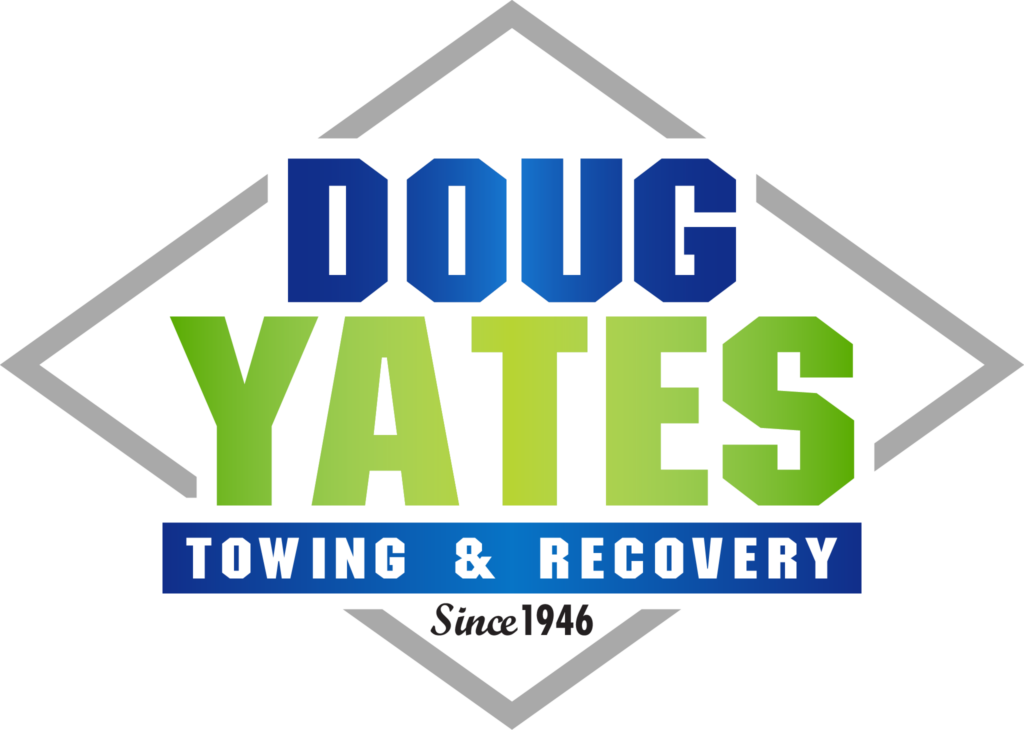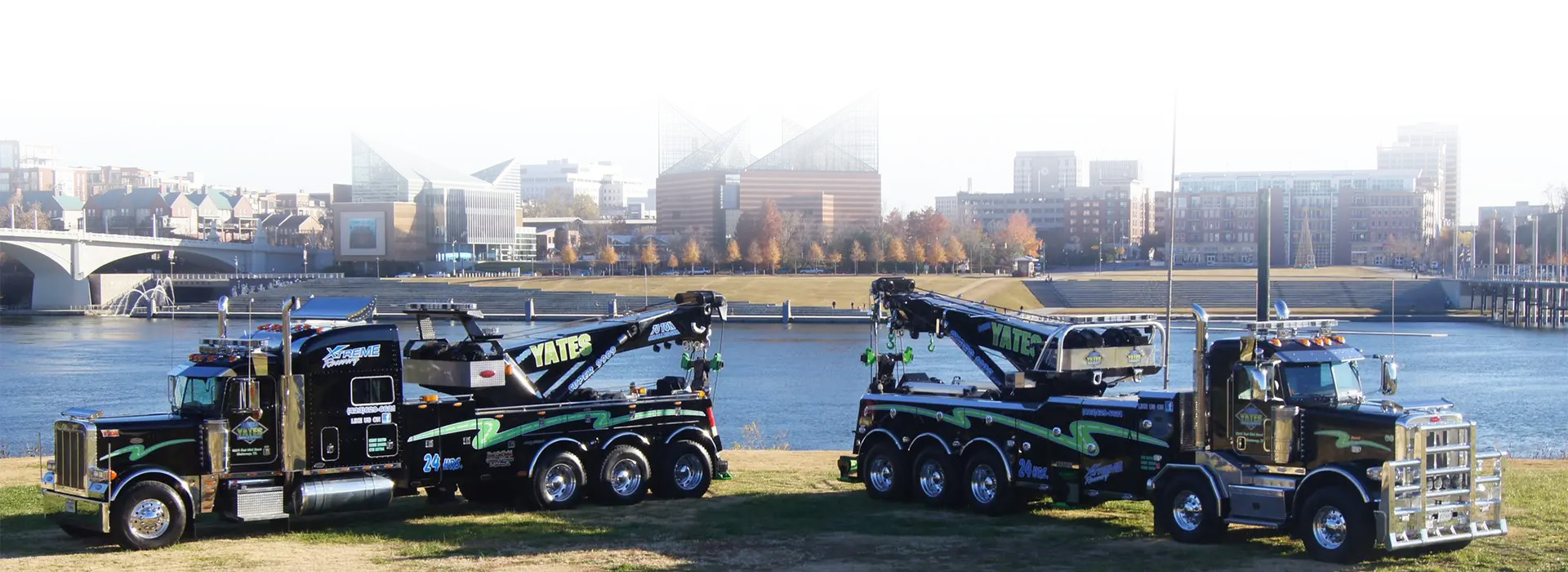Driving in the rain, especially heavy rain can be a nightmare to many drivers on the road. It can turn your daily commute into a fearful one. Reduced visibility, slippery roads, and hydroplaning are just a few of the challenges that come with driving in these conditions. However, with the right precautions and knowledge, you can safely get to where you need to go. Here, Doug Yates Towing & Recovery shares ten safety tips for driving in heavy rain.
Driving In The Rain Safety Tips
Check Your Vehicle
Before hitting the road in rainy weather, it’s important to ensure your vehicle is in prime condition for any weather. Here are a few important things to check:
- Tire Tread and Pressure: Make sure your car has adequate tire tread depth and proper tire pressure. These are essential for maintaining traction in wet conditions.
- Windshield Wipers: Check that your windshield wipers are in good working order. Replace them if needed.
- Lights: Make sure that all your lights are functional. Rain reduces visibility, so it’s important to have all your lights working.
- Brakes: Check your brake pads and make sure your brakes are responsive. You don’t want them going out
- Fluid Levels: Ensure your vehicle’s fluids are sufficient.
Slow Down and Increase Following Distance
One of the most effective ways to stay safe in heavy rain is to reduce your speed and increase your following distance. When rain mixes with oils on the road it creates a slippery surface. By slowing down and allowing more space, you’ll have more time to react in the case of an emergency. If visibility is severely reduced, consider pulling over to a safe location until the rain subsides.
Use Your Headlights When Driving In The Rain
In heavy rain, visibility is often compromised, making it vital to use your headlights properly:
- Low Beams: Use low-beam headlights, not high beams. High beams can reflect off raindrops and reduce visibility further.
- Daytime Running Lights: Even during the day, turning on your headlights can increase your vehicle’s visibility to others.
- Fog Lights: If your vehicle is equipped with fog lights, use them to improve visibility in heavy rain.
Defog and Defrost Your Windows
Rainy weather often leads to foggy windows, which can be a significant safety hazard. To keep your visibility clear:
- Defog: Use your vehicle’s defrost setting to clear the inside of your windshield. Make sure your air conditioning system is set to recirculate the air.
- Fresh Air: If your windows continue to fog up, use fresh air from outside the vehicle to help clear the condensation.
Avoid Cruise Control
In wet conditions, it’s best to maintain full control over your vehicle. Cruise control can make it difficult to react quickly to changing road conditions, increasing the risk of hydroplaning. It’s safer to disable cruise control when driving in heavy rain.
Be Cautious of Hydroplaning When Driving In The Rain
Hydroplaning occurs when your vehicle’s tires lose contact with the road surface due to a layer of water between the tires and the road. To prevent hydroplaning:
- Reduce Speed: Slower speeds reduce the risk of hydroplaning.
- Avoid Puddles: Steer clear of standing water and puddles whenever possible.
- Maintain Tire Tread: Ensure your tires have adequate tread depth to displace water effectively.
- Steer Gently: If you start to hydroplane, take your foot off the gas and gently steer in the direction you want to go. Avoid sudden movements or slamming on the brakes.
Stay Informed About Weather Conditions
Check the weather forecast. Most cell phones provide us with real-time information on road conditions and weather updates. Consider using smartphone apps or GPS devices that provide weather alerts and traffic updates to stay informed about potential hazards.
Plan Your Route When Driving In The Rain
When driving in heavy rain, it’s a good idea to plan your route beforehand, if possible. Stick to main roads and highways that are more likely to be well-maintained and have better drainage systems. Avoid low-lying areas and flood-prone regions if possible.
Keep Both Hands on the Wheel
Maintaining control of your vehicle in heavy rain requires a firm grip on the steering wheel. Keep both hands on the wheel to ensure you have the maximum control and can react quickly to any surprises on the road.
Don’t Drive Through Flooded Areas
Never attempt to drive through flooded streets or areas where water levels are unknown. It’s impossible to gauge the depth of the water, and even a few inches of flowing water can carry your vehicle away. Turn around and find an alternative route if you encounter a flooded road.

Need Towing Services or Roadside Assistance? Call Us Today!
Driving in heavy rain can be a challenging experience, but with the right precautions and safety measures, you can reduce the risks and arrive at your destination safely. Remember to check your vehicle, adjust your driving habits, and stay informed about weather conditions. By following these safety tips, you can navigate the storm with confidence and protect yourself, your passengers, and other road users from the dangers of driving in heavy rain.
If you find yourself stuck in the rain or in an accident due to rain, give us a call. Our team will have a tow truck out to you as soon as possible to assist you and your vehicle.

